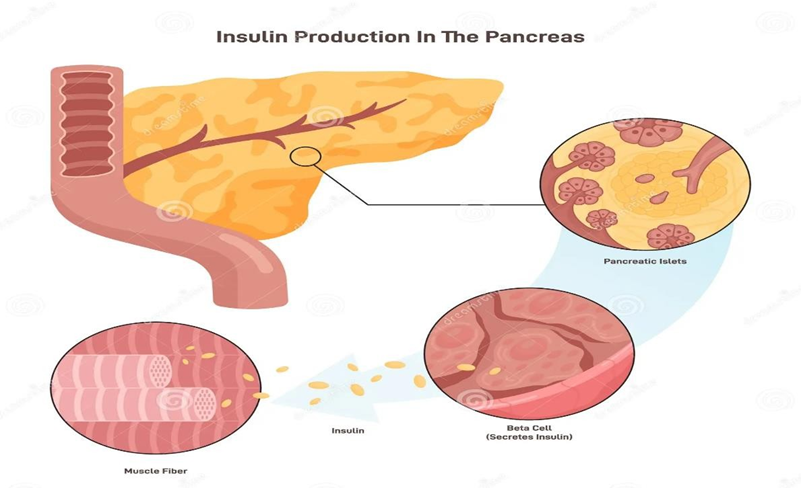The nurse is caring for a 22-year-old female patient who is brought to the emergency department with a new onset of blurred vision and headache. Use the chart to answer the questions.
The nurse recognizes the patient is demonstrating signs of diabetic ketoacidosis (DKA). Which findings support this recognition? Select all that apply.
(Select All that Apply.)
Acetone breath and respiratory pattern
Blurred vision and headache
Nausea and vomiting
History of type 1 DM Appendix removal at age 7
Weekend alcohol ingestion
Tachycardia and hypotension
Insulin pump turned off
Correct Answer : A,C,F,G
A. Acetone breath, characterized by a fruity or acetone-like odor on the patient's breath, is a classic sign of DKA. In addition, Kussmaul respirations, which are deep and labored breathing patterns, can occur as the body attempts to compensate for metabolic acidosis in DKA.
C. Nausea and vomiting are common symptoms of DKA and can occur due to metabolic acidosis, electrolyte imbalances, and gastrointestinal disturbances associated with the condition.
F. Tachycardia and hypotension are signs of hemodynamic instability, which can occur in severe cases of DKA due to dehydration, electrolyte imbalances, and the systemic effects of metabolic acidosis.
G. Turning off an insulin pump can lead to insulin deficiency, which is a precipitating factor for DKA, particularly in patients with type 1 diabetes who rely on continuous insulin therapy. This finding is consistent with the development of DKA.
B. Blurred vision and headache can be symptoms of DKA, although they are not specific to this condition. Elevated blood glucose levels and dehydration associated with DKA can lead to osmotic diuresis and subsequent fluid shifts, which may manifest as headache and visual disturbances.
D. A history of type 1 diabetes mellitus (DM) predisposes the patient to DKA but the history of appendix removal at age 7 is not directly relevant to the current presentation of DKA.
E. Alcohol ingestion can contribute to the development of DKA by inhibiting gluconeogenesis and promoting ketoacidosis, particularly if the patient is not consuming adequate carbohydrates and insulin. However, it is not a direct sign of DKA.
Nursing Test Bank
Naxlex Comprehensive Predictor Exams
Related Questions
Correct Answer is B
Explanation
B. Beta cells are the pancreatic cells responsible for secreting insulin. Insulin acts to lower blood sugar levels by facilitating the uptake of glucose into cells for energy or storage. In individuals with diabetes mellitus, dysfunction of beta cells can lead to inadequate insulin secretion, resulting in high blood sugar levels.
A. Alpha cells are another type of cell in the pancreas, but they secrete glucagon, not insulin. Glucagon has the opposite effect of insulin, increasing blood sugar levels by stimulating the breakdown of glycogen in the liver.
C. Acinar cells are exocrine cells found in the pancreas that secrete digestive enzymes into the pancreatic ducts. These enzymes aid in the digestion of food in the small intestine. Acinar cells are not involved in the production of insulin.
D. Plasma cells are a type of white blood cell that produces antibodies as part of the immune response. They are not involved in the production of insulin.

Correct Answer is B
Explanation
B. An elevated white blood cell (WBC) count, specifically an elevation in the neutrophil count (neutrophilia), is commonly seen in pneumonia. It indicates an inflammatory response to the infection and is a typical finding in bacterial pneumonia.
A. A decreased serum creatinine level is not typically associated with pneumonia and may not be directly related to the condition. In fact, it may suggest impaired kidney function or dehydration, but it is not a concerning lab abnormality specifically related to pneumonia.
C. Protein in the urine (proteinuria) may be present in various conditions, including kidney disease, urinary tract infections, and certain systemic illnesses. While it can sometimes be seen in severe cases of pneumonia, it is not a specific or common finding associated with the condition.
D. Decreased serum potassium levels are not typically associated with pneumonia itself. However, certain factors related to pneumonia treatment or complications, such as the use of diuretics or vomiting, could lead to hypokalemia. While hypokalemia can have serious consequences, it is not directly related to the severity of pneumonia.
Whether you are a student looking to ace your exams or a practicing nurse seeking to enhance your expertise , our nursing education contents will empower you with the confidence and competence to make a difference in the lives of patients and become a respected leader in the healthcare field.
Visit Naxlex, invest in your future and unlock endless possibilities with our unparalleled nursing education contents today
Report Wrong Answer on the Current Question
Do you disagree with the answer? If yes, what is your expected answer? Explain.
Kindly be descriptive with the issue you are facing.
